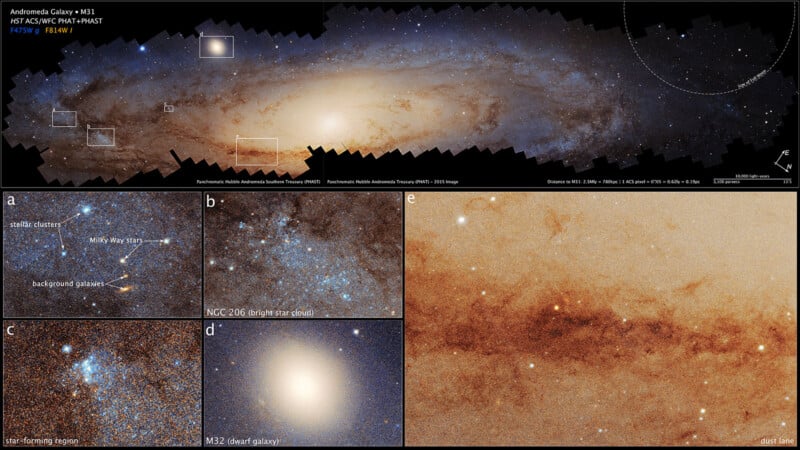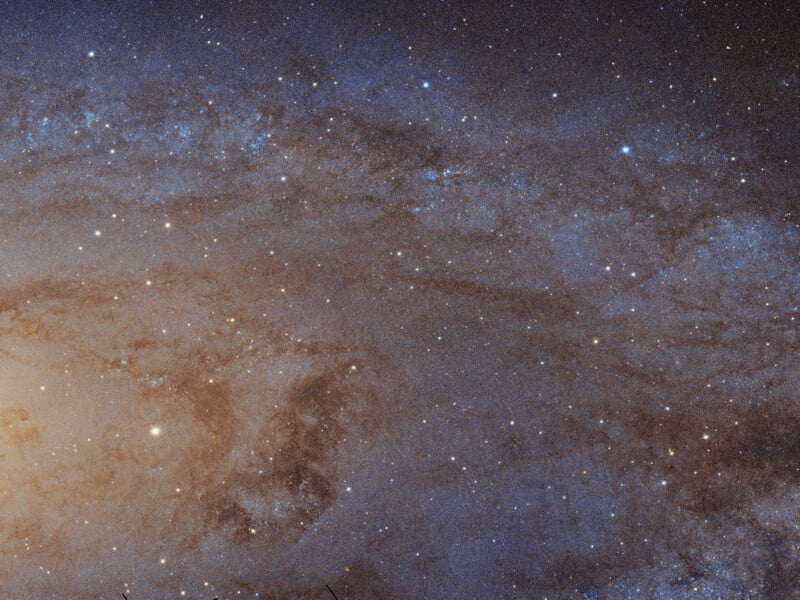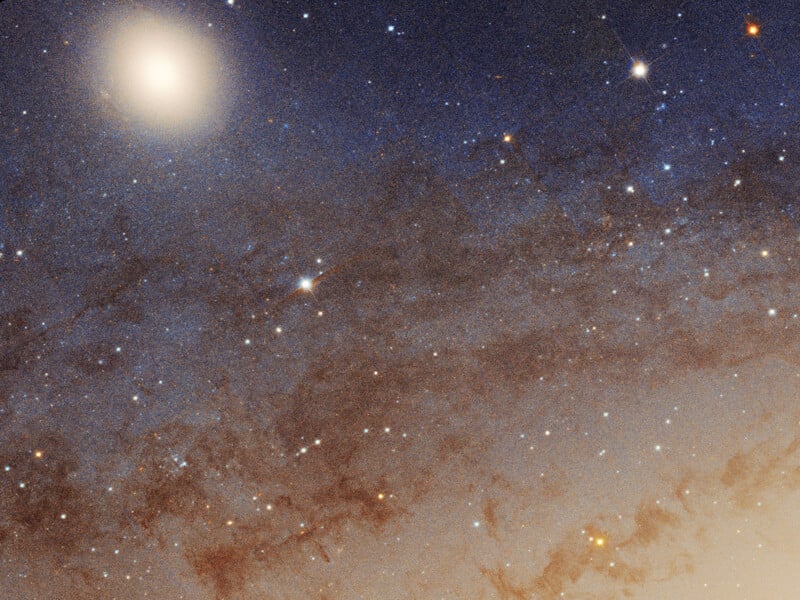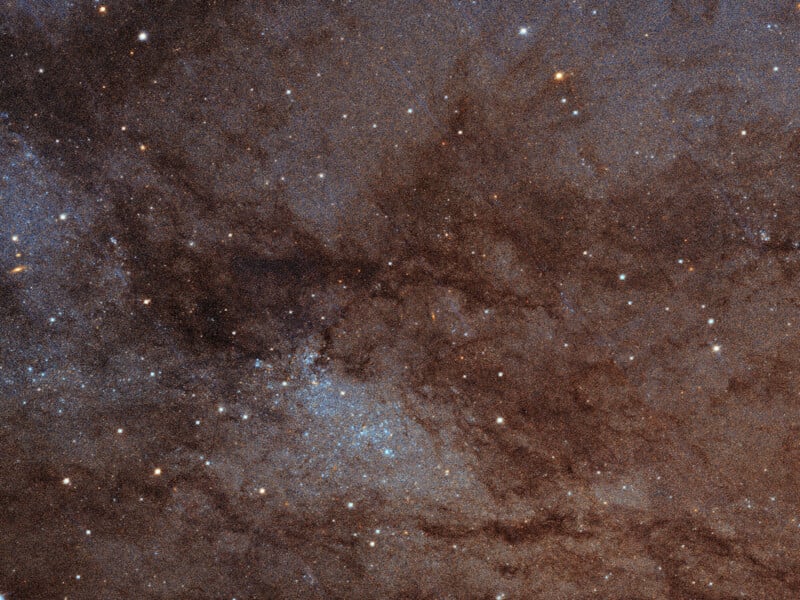417-Megapixel Andromeda Galaxy Panorama Took Over a Decade to Make

Using the Hubble Space Telescope, astronomers have completed the most comprehensive survey of the Andromeda galaxy and created a 417-megapixel panorama. It took over a decade to make and includes more than 600 photos.
The massive 42,208 by 9,870-pixel panorama is the largest photomosaic ever created using Hubble Space Telescope observations. The vast mosaic features 200 million stars, which is still just a fraction of the estimated one trillion stars in Andromeda. Spread across 2.5 billion pixels, the mosaic’s details will help scientists learn more about Andromeda’s history, including distant mergers with smaller satellite galaxies.
As the Milky Way galaxy’s nearest neighbor, Andromeda has long captivated astronomers. A century ago, Edwin Hubble, for whom the Hubble Space Telescope is named, determined that Andromeda, then described as a “spiral nebula,” was actually far outside the Milky Way galaxy. Before this discovery, people believed the Milky Way comprised the entire Universe. Hubble’s discovery instantly transformed humanity’s understanding of the cosmos.

Andromeda’s impact continues to be acutely felt, as it offers vital insights into the Milky Way galaxy. “Without Andromeda as a proxy for spiral galaxies in the universe at large, astronomers would know much less about the structure and evolution of our own Milky Way. That’s because we are embedded inside the Milky Way. This is like trying to understand the layout of New York City by standing in the middle of Central Park,” NASA explains.
“With Hubble we can get into enormous detail about what’s happening on a holistic scale across the entire disk of the galaxy. You can’t do that with any other large galaxy,” explains principal investigator Ben Williams of the University of Washington.

While the newer James Webb Space Telescope has stolen some of Hubble’s legendary thunder, the space telescope remains vital to astronomy and physics. Hubble can take sharp photos, over 600 of which make up the new mosaic.
Since Andromeda is so large and relatively close, although still 2.5 million light-years away, NASA describes the task of photographing Andromeda as “herculean.”

“Because the galaxy is a much bigger target on the sky than the galaxies Hubble routinely observes, which are often billions of light-years away. The full mosaic was carried out under two Hubble programs. In total, it required over 1,000 Hubble orbits, spanning more than a decade,” NASA explains.
The panorama began with the Panchromatic Hubble Andromeda Treasury (PHAT) program about 10 years ago. Hubble’s Advanced Camera for Surveys and Wide Field Camera 3 captured near-ultraviolet, visible, and near-infrared wavelength photos of Andromeda’s northern half.
The Panchromatic Hubble Andromeda Southern Treasury (PHAST) program followed, adding about 100 million stars from the southern half of Andromeda.
The combined programs cover Andromeda’s entire disk, seen nearly edge-on and tilted by 77 degrees relative to Earth’s view of the galaxy.
“This detailed look at the resolved stars will help us to piece together the galaxy’s past merger and interaction history,” says Williams.

“Andromeda’s a train wreck. It looks like it has been through some kind of event that caused it to form a lot of stars and then just shut down,” adds Daniel Weisz at the University of California, Berkeley. “This was probably due to a collision with another galaxy in the neighborhood.”
As brilliant and detailed as Hubble’s dataset of Andromeda, the upcoming Nancy Grace Roman Space Telescope holds even more promise. Roman is basically a wide-angle version of Hubble and will capture the equivalent of 100 high-resolution Hubble photos in a single exposure. Data from Roman and images collected by the James Webb Space Telescope will complement Hubble’s remarkable contributions.
Image credits: NASA, ESA, Benjamin F. Williams (UWashington), Zhuo Chen (UWashington), L. Clifton Johnson (Northwestern); Image Processing: Joseph DePasquale (STScI)